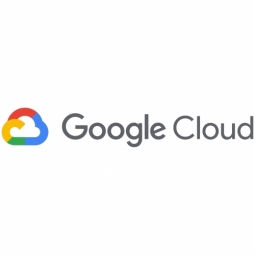Technology Category
- Analytics & Modeling - Big Data Analytics
- Analytics & Modeling - Machine Learning
Applicable Industries
- Consumer Goods
- Retail
Applicable Functions
- Quality Assurance
- Sales & Marketing
Use Cases
- Experimentation Automation
- Retail Store Automation
Services
- Cloud Planning, Design & Implementation Services
- Testing & Certification
About The Customer
American Eagle Outfitters is a US-based clothing manufacturer and retailer that offers lifestyle apparel and accessories to consumers worldwide. Over the past two decades, the company has used data as the foundation to inform and enhance every customer experience. The company’s data-driven culture, along with the fact that it has always owned product fulfillment from material sourcing through sales and service, has enabled it to remain quick and agile. The company is continuously innovating with investments in pricing, promotion, assortment, technology, and in-store experiences to stay relevant to changing customer preferences.
The Challenge
American Eagle Outfitters, a leading US clothing manufacturer and retailer, was facing the challenge of staying relevant to changing customer preferences. The company needed to innovate with investments in pricing, promotion, assortment, technology, and in-store experiences. However, executives needed confidence in the ROI of these activities to justify the associated spending. The company was also dealing with an increasing amount of data from various sources including web, mobile, and third-party data combined with transaction, inventory, weather, mobility, and other market data. This presented new opportunities to understand and shape customer behavior but also required a more efficient approach to data warehousing to increase speed and scalability.
The Solution
American Eagle chose Google Cloud and partner Accenture to transform its approach to data analytics and enhance decision-making for different investments across the enterprise. The company overhauled its approach to data warehousing, taking advantage of the native integrations across Google products to fast-track insights on their data. By exporting Google Analytics 360 data into BigQuery, American Eagle was able to better understand its different customer segments on the web and customer targeting. The company also prioritized the testing platform as a key need and decided to work with Accenture to automate data science for better results at scale. The experiment solution delivered business interfaces, embedded analytics tools, and reporting features all integrated within American Eagle’s BigQuery environment. With tools including Google Kubernetes Engine and Cloud SQL underpinning the deployment and experts at Accenture working on the project, the new testing solution was up and running in four months.
Operational Impact
Quantitative Benefit

Case Study missing?
Start adding your own!
Register with your work email and create a new case study profile for your business.
Related Case Studies.
.png)
Case Study
Improving Vending Machine Profitability with the Internet of Things (IoT)
The vending industry is undergoing a sea change, taking advantage of new technologies to go beyond just delivering snacks to creating a new retail location. Intelligent vending machines can be found in many public locations as well as company facilities, selling different types of goods and services, including even computer accessories, gold bars, tickets, and office supplies. With increasing sophistication, they may also provide time- and location-based data pertaining to sales, inventory, and customer preferences. But at the end of the day, vending machine operators know greater profitability is driven by higher sales and lower operating costs.

Case Study
Improving Production Line Efficiency with Ethernet Micro RTU Controller
Moxa was asked to provide a connectivity solution for one of the world's leading cosmetics companies. This multinational corporation, with retail presence in 130 countries, 23 global braches, and over 66,000 employees, sought to improve the efficiency of their production process by migrating from manual monitoring to an automatic productivity monitoring system. The production line was being monitored by ABB Real-TPI, a factory information system that offers data collection and analysis to improve plant efficiency. Due to software limitations, the customer needed an OPC server and a corresponding I/O solution to collect data from additional sensor devices for the Real-TPI system. The goal is to enable the factory information system to more thoroughly collect data from every corner of the production line. This will improve its ability to measure Overall Equipment Effectiveness (OEE) and translate into increased production efficiencies. System Requirements • Instant status updates while still consuming minimal bandwidth to relieve strain on limited factory networks • Interoperable with ABB Real-TPI • Small form factor appropriate for deployment where space is scarce • Remote software management and configuration to simplify operations

Case Study
Digital Retail Security Solutions
Sennco wanted to help its retail customers increase sales and profits by developing an innovative alarm system as opposed to conventional connected alarms that are permanently tethered to display products. These traditional security systems were cumbersome and intrusive to the customer shopping experience. Additionally, they provided no useful data or analytics.

Case Study
How Sirqul’s IoT Platform is Crafting Carrefour’s New In-Store Experiences
Carrefour Taiwan’s goal is to be completely digital by end of 2018. Out-dated manual methods for analysis and assumptions limited Carrefour’s ability to change the customer experience and were void of real-time decision-making capabilities. Rather than relying solely on sales data, assumptions, and disparate systems, Carrefour Taiwan’s CEO led an initiative to find a connected IoT solution that could give the team the ability to make real-time changes and more informed decisions. Prior to implementing, Carrefour struggled to address their conversion rates and did not have the proper insights into the customer decision-making process nor how to make an immediate impact without losing customer confidence.









